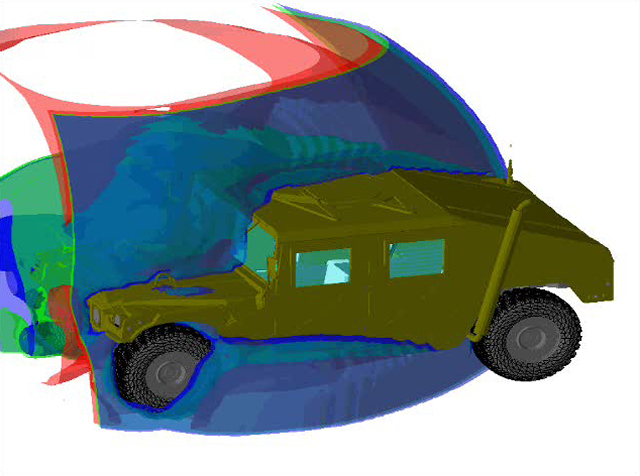Today’s soldier is protected and assisted on the battlefield by technology unimagined just a handful of years ago.
Yet one battlefield hazard continues to challenge our technological capabilities – improvised explosive devices (IEDs).
These challenges remain associated with detection, avoidance, and most importantly, survival. In the overall effort to combat this battlefield threat, much has been learned about the severity and dynamics of IED explosive events.

Consequently, the United States Army Research Laboratory in Adelphi, Maryland (just outside of Washington, D.C.) approached Lansmont Corporation, a world-leading dynamic design and test system manufacturer, seeking help.
The US Army needed outside expertise in delivering a horizontal impact test system which could simulate the energy associated with IED explosions in a controlled laboratory environment.
The US Army would use this test system to design protection systems, including seat structure and restraint systems that would mitigate the effects of these dangerous events on soldiers – maximizing survivability. The performance of this test system dictated the need to simulate an explosion occurring from the side of a vehicle versus directly underneath a vehicle.
The system also called for a stationary, floating test sled, to which a seated crash test dummy, or device under test (DUT) would be mounted. Instead of firing the test sled into a rigid mass, the Army required the test sled to remain stationary during testing. This would eliminate any chances of biasing results with high pre-acceleration levels linked to the initial “firing” of the test sled and DUT.

Lansmont designed and delivered the innovative 91HITS (Horizontal Impact Test System).
The 91HITS uses a two sled design; one bullet and one test sled. The bullet is pneumatically fired into the test sled achieving impact velocity changes as high as 34 mph (15 m/s) and accelerations upwards of 500g. This violent activity takes place within a tight, 20 ft. end-to-end operating envelope.
The entire event occurs in less than a half-second! Resulting impacts possess enough energy to throw a 250 lb. (113 kg.) soldier nearly four stories (38 ft. / 12m) into the air. After the desired impact, the table and specimen are decelerated by a pneumatic braking system.
Each of these violent events are continuously controlled by Lansmont’s proprietary TTSII (TouchTest Shock Version II) controls, including all sled and DUT shock pulse data.